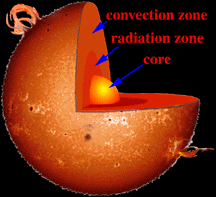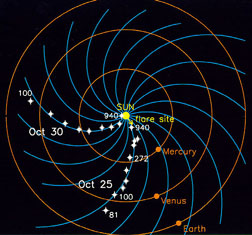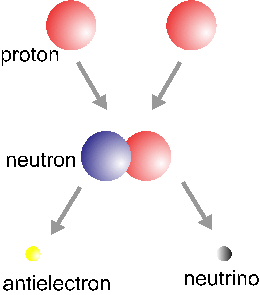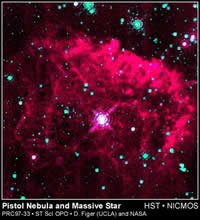The convection zone of the Sun
Click on image for full size
The Convection Zone
The convection zone in the Sun occurs above the radiative zone,
at about .7 to .8 solar radii from the center of the Sun.
At this point the temperature
gradient (the change in temperature with depth)
becomes so large that turbulent convective motions occur,
similar to a pot of boiling water. The overturning motions inside the Sun are
responsible for the granulation pattern seen on the Sun's surface.
You might also be interested in:

To understand how our Sun works, it helps to imagine that the interior of the Sun is made up of different layers, one inside the other. The innermost layer, the solar core, is the region where the energy
...more
What are the "parts" of the Sun? The photosphere, the visible "surface" of the Sun, defines the outermost boundary of the "inside" of the Sun. The three main regions of the
...more
The scientific field of thermal physics is concerned with heat and temperature. When we delve into topics such as global warming, the structure of Earth's solid and liquid cores, and the way in which energy
...more
The Sun's radiative zone is the section of the solar interior between the innermost core and the outer convective zone. In the radiative zone, energy generated by nuclear fusion in the core moves outward
...more
The convection zone in the Sun occurs above the radiative zone, at about .7 to .8 solar radii from the center of the Sun. At this point the temperature gradient (the change in temperature with depth)
...more
IMF stands for Interplanetary Magnetic Field. It is another name for the Sun's magnetic field. The Sun's magnetic field is enormous and is carried by the solar wind. The solar wind and magnetic field are
...more
The basic Hydrogen fusion cycle involves four Hydrogen nuclei (protons) and two electrons and yields a Helium nucleus, two neutrinos and six photons. This process occurs in three steps: the first one is
...more
Fusion in the core of the stars is achieved when the density and temperature arising from the gravitational pressure are high enough. There are different fusion cycles that occur in different phases of
...more











